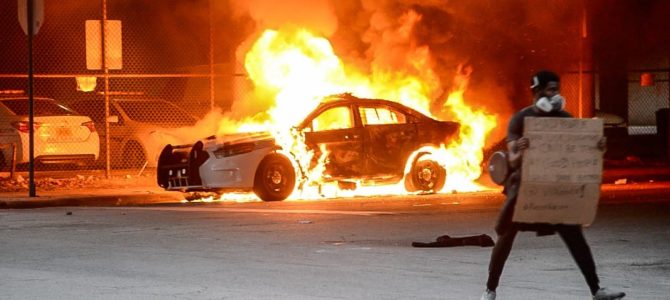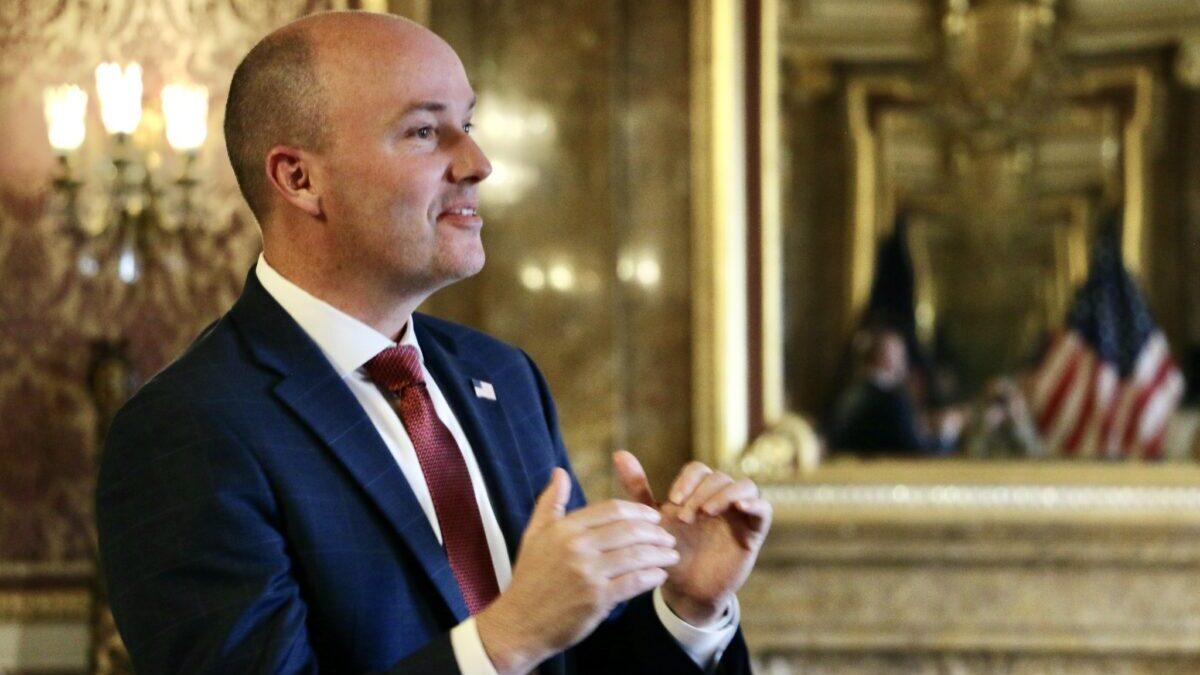The Black Lives Matter protests are radical, they are violent, and they have claimed innocent lives all over the country. This isn’t a surprise: We’ve watched this movement played out before by many of the exact same leaders and even under the exact same name. Now, through a combination of political foolishness, public amnesia, and willful media gaslighting, America gets to live it all again — and more civilians and police officers are being attacked and even killed.
The Black Lives Matter movement isn’t new at all. It’s the same loose collection of good-thinking people concerned over police violence and violent, anti-police and anti-family radicals as it was when it first gained national prominence in 2014.
As a refresher, the group was founded in 2013, during President Barack Obama’s second term and after the fatal shooting of Trayvon Martin in Florida. It wasn’t until a rash of viral police-related deaths the next year that its national profile began to rise, including protests over the killing of Michael Brown in Ferguson, Missouri, Eric Garner in New York City, and then the following year Freddie Gray in Baltimore and Walter Scott in North Charleston, South Carolina.
It was cheered on at the time by the media for all the same reasons it’s being cheered on today: Some of the viral videos and events convincingly depicted unjustified killings of black suspects by police, and despite the clear and radical politics of the founders, their name conveys an obvious truism. Unfortunately, it quickly showed its violent and intolerant side then, just as it has today.
Americans likely most clearly recall Ferguson’s protests, where for days black-owned businesses were torched and looted. Over the next few years, we watched in horror as Baltimore’s years-long revival was stopped in its tracks, block after block burned, and families attending an afternoon baseball game were set upon by screaming mobs.
As editor in chief of The Daily Caller News Foundation then, I oversaw our broader Baltimore 2015 riot coverage. As two in the morning approached on April 28, I turned off the police scanner, confident our guys were OK and looking forward to a few hours’ sleep before an early workday. Minutes later, our man running the coverage on the ground texted, “We are alright,” which indicated to me that they were not alright at all. Indeed, my friend was in the emergency room with two of our young reporters, who had been beaten and robbed by the rioters.
“When I saw the guy heading our way with a hammer in his hand and a bandanna covering his face, I knew he meant business,” a New York Daily News reporter who ran to their aid and then drove our guys through the mob to safety wrote later that morning. By the time they escaped, Caller reporter Casey Harper was struggling to stay conscious with a severe concussion, broken eye socket, and stolen phone, while his colleague Connor Wolf got off with a broken nose (and managed to hold onto his blood-stained notebook throughout). The two had been targeted for being white. No one slept until after we were back in the newsroom and their story was filed.
The violence and disruption they’d been subject to were tolerated and papered over by Democrats and corporate media, who made excuses for attacks on civilians, police, and media, and blamed outside agitators even while they were shouted down and disrupted by activists demanding “a conversation” but committed to ensuring no one speaks but them.
The following year, 2016, national Black Lives Matter protests broke out against the killing of Alton Sterling in Baton Rouge, Louisiana. Dozens of officers were injured with projectiles and threatened by protesters. Then on July 7, just before 9 p.m. CT, a man opened fire on police preparing for one of the protests in Dallas, killing three policemen, wounding three others, and wounding one civilian.
During his retreat, he killed another officer, shooting him in the back after sneaking around a pillar he was taking cover behind during a gunfight. Seeking to fortify an El Centro College building, he opened fire on two campus cops, hitting one in the gut and injuring the other with shattered glass.
Police followed the man’s trail of blood through the school, engaging when they could clearly make him out in the darkness. From a window near where he made his last stand, he was able to kill another police officer who was on the street below. After negotiations broke down, the department killed him with a remote bomb.
Before he was killed, the gunman told a negotiator he was motivated by anger on behalf of the Black Lives Matter movement. His Facebook page called for people to “KILL EVERYTHING IN BLUE EXCEPT THE MAIL MAN.” By the morning of July 8, the murdered men included Officers Lorne Ahrens, Michael Krol, former Army Ranger Michael Smith, former U.S. Navy sailor Patrick Zamarripa, and former Marine Brent Thompson.
“Protests are messy,” a Vox writer wrote dismissively a week later. “When thousands or millions of people rise up in very passionate demonstrations, some bad, violent people are going to get caught up in the cause.”
But the pressure was intense, and reluctant cracks began to form in the ranks. “Black Lives Matter Was Gaining Ground,” a New York Times headline lamented, “Then a Sniper Opened Fire.”
Things quieted down. Donald Trump won the presidency, and shell-shocked journalists and Democrats went on a short-lived soul-searching mission, wondering what went wrong and how they could have misread the American public so badly. “Maybe we pushed too far,” President Obama privately reflected. “What if we were wrong?”
The introspection did not last, and by the end of the year — a year five police officers were killed and dozens wounded and hospitalized by Black Lives Matter radicals — BuzzFeed fondly looked back on 2016 as “the year Black Lives Matter went global.”
Just a few short weeks into the summer of 2020, it’s happening again: Seven shot in a Louisville protest park; one week later a protester killed; two dead in Chicago; four shootings in Seattle’s “autonomous zone;” a 77-year-old, black, retired St. Louis Police captain murdered; a 22-year-old, black woman in Davenport shot as she tried to leave.
Once again, politicians and media are defending and gaslighting for the violence. “I want to be clear how I characterize this,” MSNBC’s Ali Veshi said while buildings visibly burned in the night sky behind him. “This is mostly a protest. It is not, generally speaking, unruly.”
“But fires,” he admitted, back-lit by flames, “have been started.”
Meanwhile in Washington, D.C., rioters threw frozen bottles, glass, rocks, and bricks at police, then lit a church on fire. Afterward, corporate reporters, Democratic politicians, and even the leader of that church called the protests peaceful and attacked police tactics. The mayor allowed protesters to maintain that space, rename it Black Lives Plaza, and paint “Black Lives Matter” on the street.
“White women are lucky that we are just calling them ‘Karen’s,'” Washington Post editor Karen Attiah wrote June 29, “And not calling for revenge.” She listed her reasons for revenge on white women as the deadly racist massacre in Tulsa 99 years ago, the lynching of Emmet Till 70 years ago, liberal feminists making her feel excluded, and white women voting for Donald Trump.
Eight days later, she complained that “The ideas of the elite class is to be protected [sic] and supported at all costs,” but “black people… poor people… [and] uneducated people? We’re supposed to accept our marginalization.” She graduated from Northwestern University, won a Fulbright Scholarship, got a master’s at Columbia University, is now the global opinions editor for The Washington Post, and still has not been fired.
But the charade cannot stand. This past weekend, an eight-year-old black child was shot and killed besides her frightened mother as the driver tried to navigate around illegal barriers Black Lives Matter protesters were guarding near the Atlanta Wendy’s where a black man was killed after scuffling with police and stealing and firing one officer’s Taser. The little girl’s name was Secoriea Turner.
“They say ‘black lives matter,'” her father, hoarse with pain, accused the movement just hours later. “You killed your own. You killed your own this time.”
“You killed a child. She didn’t do nothing to nobody.”
“My baby,” her mother sobbed as family comforted her and helped her walk from the stage.
“At the point that an eight-year-old baby is killed, the discussions have ended,” the mayor announced. Just hours later, another person was killed and two more wounded nearby.
But some aren’t getting the message. “If you want an all-black lives matter movement started … then start that movement,” CNN’s Don Lemon told black actor Terry Crews Monday. “But that’s not what Black Lives Matter is about.”
Lemon was wrong on most things during that segment, but on that one point, he was right. Let’s see how long it takes us to remember.









